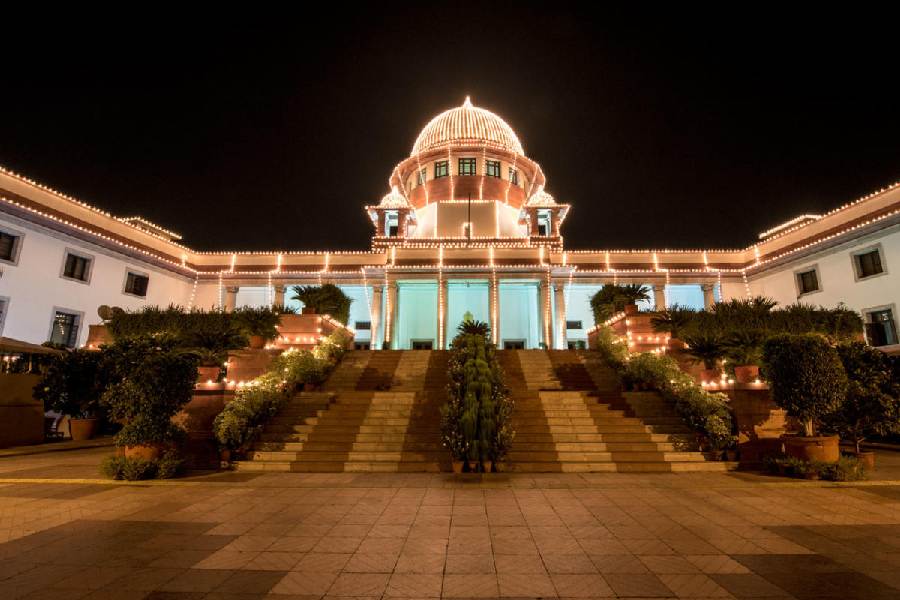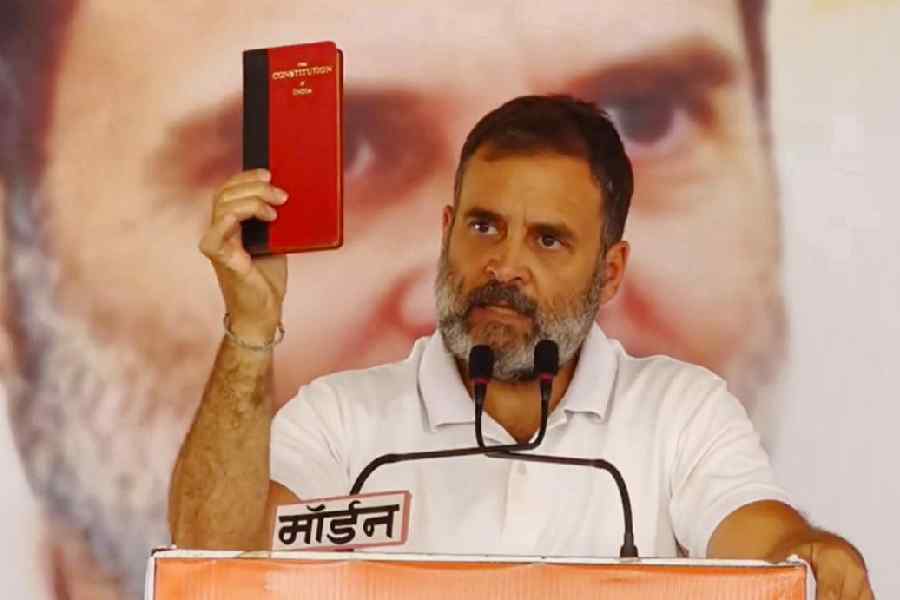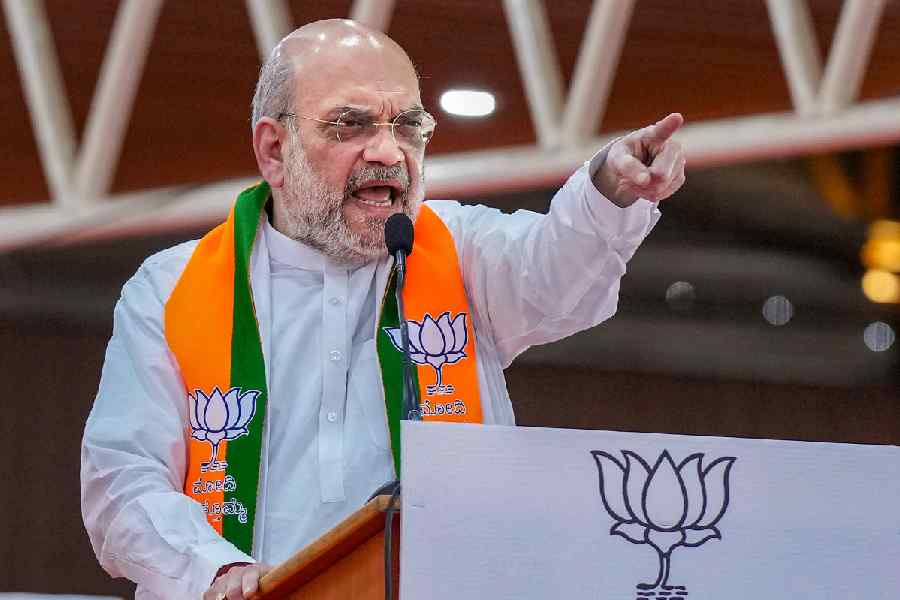It was Eid. Free India’s first. Independence was, on August 18, 1947, four days old.
If Independence was new, Partition was new too. And whatever be the heady aspirations of the new nation, new dilemmas were getting ready to intrigue us, new and knotty conundrums gestating in the womb of swaraj.
Places no one in Bengal could think of as belonging to another country were suddenly in Pakistan or in India.
Gandhi was in Calcutta, staying by his choice in a graceful if modest Muslim house in the city’s suburb of Beliaghata. The mixed population of the capital of the new state of West Bengal had hailed the dawn of freedom. But the seventy-eight-year-old was not taking anything for granted. He was certainly not taking displays of bonhomie for granted.
Though divided on maps, the two regions had not yet become rigid in the matter of cross-border movement.
On the 18th, Eid-day, even as many Muslims from the city thronged the Beliaghata home and received some fruit from him, a group of dazed Congress workers from Khulna, now in East Pakistan, came to him. On the 15th, they said, they had hoisted the Indian Tricolour presuming that Khulna would remain in India. But the Boundary Commission, bless its simple soul, had ‘awarded’ it to East Pakistan. This was one of the anomalies of Partition. ‘Anomalies’ is just a word. But for those it hits, it is no word but a hatchet. All of Khulna district with a Hindu majority of 52% had ‘gone’ to East Pakistan in lieu of the much smaller Murshidabad district which had been ‘awarded’ to India. Result: isolation where home was, alienation where life was. For Hindus ‘there’, Muslims ‘here’, Partition came with an edge. A razor’s edge — kshurasya dhara, to use an Upanishadic phrase of uncertainties.
For Gandhi’s Khulna visitors, the immediate ‘edge’ was: what do we do with the Indian flag we have hoisted in Khulna?
Used as he was to major existential issues posed to him as well as quotidian ones like this, Gandhi pondered their dilemma seriously. And he said, “There can be no two options, the Union Flag must go, Pakistan’s must be hoisted, without demur and with joy if possible. Award is award, good or bad.”
Without demur and with joy! Tall order, that. As tall as the well-known bamboo-staff with which he had trudged Noakhali’s blood-soaked earth and then Bihar’s.
That was, as I said, on August 18, Eid-day. Gandhi went later that day with H.S. Suhrawardy, the last premier of undivided Bengal (who would later shift seamlessly to Pakistan, becoming prime minister of that country briefly). The venue was the Mohammedan Sports maidan. It held some four to five lakh persons, from all communities. Gandhi spoke simply. “We have to make this unity,” he said, “a lasting one.”
The next day, August 19, he spoke more pointedly at a gathering in Kanchrapara. The population of this place comprised twenty-five thousand Hindus and eight thousand Muslims. Gandhi got the mixed Hindu-Muslim gathering to take out a joint procession with the Indian national flag. But not before telling them something that was vital then, is vital today: “The custom of not playing music in front of Masjids was introduced by the British regime. We must stick to the same custom until Jawahar or Liaquat introduce some other custom.”
On August 20 — this day, in 1947 — he held his daily prayer meeting in Calcutta in an open area surrounded by Canning Street, Pollock Street, Murgikhana and Kolutolla. He was seated in a way that he had a temple on one side, a masjid on the other and a church on the third. This was the very site where, on November 18 in 1946, a vicious communal riot had broken out. Suhrawardy, who was premier at that time, would not have forgotten that riot. He could not have, if he had a conscience — a big ‘if’, according to many. Gandhi knew his history, knew when to remind who of what. And so he said at that meeting that he wanted to go back to Noakhali.
He expected the East Pakistan authorities to take note that he (Gandhi) had not forgotten the plight of Hindus ‘there’ even as he was being mindful of the plight of Muslims ‘here’, that he regarded the security of minorities in both sectors as a shared responsibility of the two new countries.
Seventy-six years later, today, when East Pakistan is now not the eastern wing of Pakistan but a country by itself, Bangladesh, is there anyone in the two countries and in Pakistan, a third country, who is speaking like Gandhi did in August 1947?
To be sure, yes. There are bravehearts who are doing so and are, with guts, facing threats from communal bigots and terrorist ogres. They speak and they listen, just as Gandhi did. But they are not only few in numbers; they also lack the one thing Gandhi had: the unquestioning support of large — huge — sections of society. And that makes their task even more difficult than Gandhi’s was. The moral dividend that a fast by Gandhi generated in 1947 and in 1948 is not likely to be generated today. District magistrates and superintendents of police may impose Section 144 and immobilise internet connections to help ease tensions. But such peace as was brought to Noakhali and Calcutta and, later, to Delhi, was not the work of the State machinery alone. It was the work of an active social conscience galvanised by one man.
And, apart from the Hindu-Muslim question, we in India are now beset by deep social fissures with razor’s edges no less sharp, such as have cut up life in Manipur.
No one in the government or in the Opposition can do what Gandhi tried to do. And there is no Gandhi in civil society today who can try doing that. No Jayaprakash Narayan either. So what does that leave us with?
Endless strife?
To be sure, no.
We have our Constitution, do we not?
Sure, we do. And that is a huge asset, a huge power.
But a book is ultimately a book. Those who read it are inspired by it. But for us to live by its word, it needs to be constantly activated, brought alive, read to us through pulsating interpretations, timely interventions. It needs to belong to us and we to it.
Who can do that?
Only the judiciary. The high courts and the Supreme Court of India, not going beyond their jurisdictions, not clutching at roles that are not theirs, not crossing any lines, have played and can continue to play that role.
The courts have disappointed as often as they have shone in the best light. They are working under a crushing workload — in terms of the number of cases they need to handle and public expectations. The infamous Emergency (1975-1977) showed our courts in deeply disappointing and brilliantly elevating facets. So also now, when social tensions and violence are at work brazenly, they can emblazon a new path for the nation by making the safety of the bulk of the people (not litigants) their constitutionally-enjoined concern.
If the Constitution needs a pivot and the judiciary is so obviously that, then the judiciary to be not a concept but a palpable, tactile reality needs a persona as well. And the Chief Justice of India is exactly that.
It is not for nothing that the Chief Justice of India is oath-bound to work ‘without fear or favour, affection or ill-will’ and it is not for nothing again that the president of India is administered the oath to ‘devote myself to the service and well-being of the people of the Republic of India’ by none other than that Chief Justice of India.
The courts are the keepers of India’s conscience not by some obscure stardom but by an unmistakable power placed on them by the Constitution. Gandhi was not ‘government’, he was not ‘the Opposition’. The CJI, who is the crest, or the final of the judiciary, does not have to be Gandhi. But the CJI is Gandhi’s hope for the hopeless and help for the helpless today. And the Supreme Court of India is the judicial equivalent of Beliaghata where choked persons from all communities may come for India’s constitutional oxygen.










